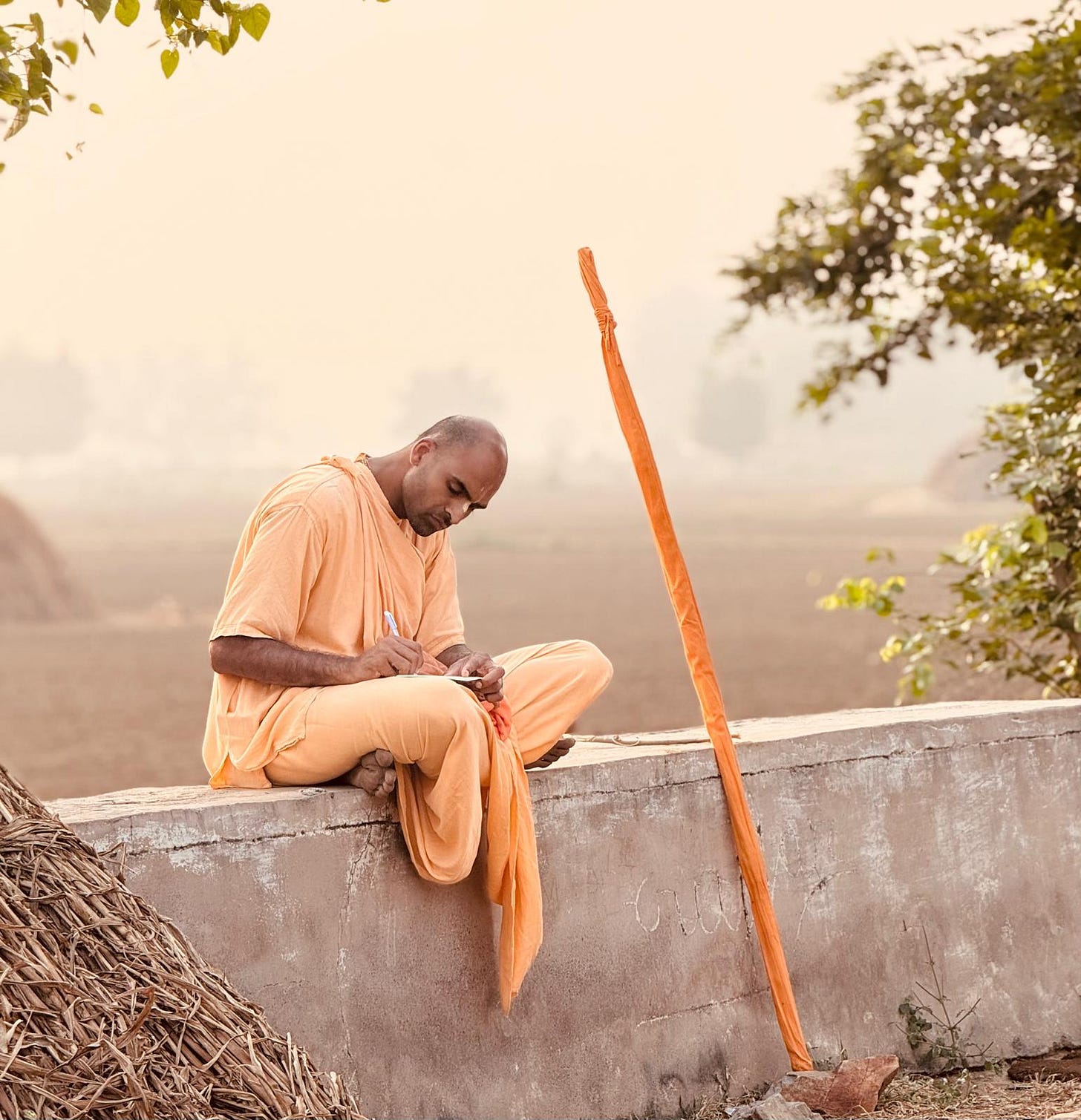Pilgrimage & Liminality
The sacred month of Kārtika dawns upon us. Pilgrims journey towards Vṛndāvana, sacrificing time, expense, energy, and comfort—not merely to witness landmarks, but to inhabit its emotions; not just to click pictures, but to glimpse beyond the material veil; not to relax and unwind, but to reconnect and intertwine. They move on parikramā, with the aim to be moved within. “I lost my heart in Vṛndāvana” a t-shirt says, highlighting the gold standard of a successful trip. My thoughts flow there, though many miles away. Vṛndāvana also dwells inside; we live there in consciousness, knowing that all other places are but pauses along the way. When the time is right, we’ll reenter that playground.
The pilgrim’s journey, however, is not an easy one. In leaving the safety of ‘home’, they confront dissonance, difficulty and disorientation. Ejected from the familiar rhythms of daily life, they enter a mystical threshold which invites further exploration. The goal is profound re-orientation—what the historian Charles Long calls “coming to terms with the ultimate significance of one’s place in the world.” The steady routines of life must sometimes be interrupted with creativity; without that, we inhabit only the narrow architecture of our present narrative, living only a shadow of what we might become. The intrepid pilgrim ventures into the magical space of liminality.
Anthropologists have long explored the phenomena of transition—socially and psychologically, and for our purposes, spiritually. Victor Turner emphasised liminality, a life space in which participants exist “in-between” identities, withdrawn from the normal modes of social life. The liminal stage is one of “not anymore” and simultaneously “not yet.” Within it, social structures are temporarily dissolved and everyone is equalised—you no longer rest in the comfort of previous identities. Liminality can bring confusion, but it also brings a fluidity, a malleability, that gives birth to the new. It’s a humbling stage, but allies appear to keep you motivated. A dramatic unfolding to awaken dormant potential. Studying these topics last week, images of Vṛndāvana parikramā resurfaced; intense, humbling, challenging, and hugely life-affirming. Liminality, at its best. Of course, Vṛndāvana is not just liminal, but eternal. Not just a tīrtha (“crossing place”), but a dhāma (“eternal resting place”). If that spiritual vision hasn’t matured, the liminality of Vṛndāvana acts as a catalyst.
Today, in quiet reflection, I realise that even here, in the midst of university life, I inhabit the very same liminality. This is pilgrimage—a creative interval, where the familiar loosens its hold and the next chapter awaits, currently beyond reach. Long-standing structures are temporarily dismantled, inviting new discoveries. I’m no longer a teacher, just an inquisitive student; no longer a leader, happy to follow the program; no longer a traveller, nowadays timetables dictate my movements; yes, a Swami, though it doesn’t really count here. This is the anti-structure, and at this stage, it’s just what I need. Liminality invites the opening of a new chapter. May the pilgrims journey on, seek the liminal, embrace the disorientation—and, ultimately, re-orientate to Vṛndāvana, the land of unlimited possibility.



I am always excited to read your writings Maharaj so poetic so insightful thank you Hare Krishna
I wonder, “How did this brilliant idea of going to college first take root in you”?